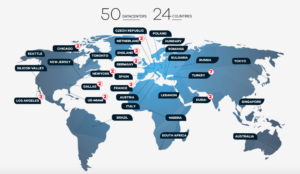What is a PoP and How Do We Create One?
PoPs Definition and Process Of Creation
A Content Delivery Network (CDN), refers to a network of geographically distributed data centers which cache content in strategic locations (PoPs) to deliver fast content. In the absence of a CDN, the request has to travel to the origin server and back. If significant physical distance separates the client making the request, and the origin server where the website and web app is hosted, then the signal will have to cross back through multiple routes. It secures web applications.
Also, CDNs improve hardware optimization using solid-state hard drives, efficient load balancing, file compression using standard GZip compress to help reduce the content delivery time ultimately. CDNs also protect against DDoS attacks and is overall a recommended practice for server health from a security stand-point.
What is PoP? Why are they so crucial to a CDN?
A CDN’s Points of Presence (POPs) on the internet refers to servers that are placed at the center of high-density Internet Exchange Points around the world. PoP is primarily strategically located data centers, containing numerous caching servers that use techniques like SSD storage, GZip compression to optimize file storage and content delivery.
How it works is the following – when someone accesses website content that is hosted on a CDN, the request will travel to a POP that is nearest to that person, rather than going back to the origin server.
For example, if someone in Singapore accesses a website hosted on servers in
The UK, the request for content will only go as far as Singapore PoP.
Each PoP, in turn, contains a cluster of caching servers that is responsible for content delivery to visitors who are located within its proximity.
PoPs, therefore, help the CDNs put the content in many places at once, thereby providing faster response times.
PoPs are significant because they help to reduce the distance between the client and the requested data.
How to set up a PoP?
- The choice that you opt for will depend on various factors like costs, performance, need for scalability and most importantly, the availability in that region where your users are located. You will also need to decide if you need a CDN account for small objects (i.e. images) or large objects such as video.
- Next, you need to set-up ISP that will route your traffic in real-time to the closest PoP. You need to consider a few critical factors such as geographic presence in your strategic locations, connectivity, reliability and cost-efficiency.
- Finally, you need to decide, in which geographic locations you want your PoPs to be located. A CDN must aim to deliver content faster to the end-users and, it needs to set-up its PoPs so that it can do this efficiently. For this, you need to consider which are your strategic geographies, what is the current latency between your origin server and your audience
- Finally, create an account with your CDN provider. At Medianova, you can opt for a free trial. You need to provide the URL of your origin servers. With our expert algorithms, your content will be strategically cached and delivered from PoP. Here, you will find more information about setting up a small objects account.
How is Medianova’s PoP functioning?
Medianova has currently 48 PoPs in 22 countries, and we have just expanded our footprints this week by activating two new PoPs in Spain and Italy, which makes a total of 50 PoPs in 24 countries around the world. We utilize the latest and best in class technologies such as Google BBR, Brotli, TCP Acceleration to deliver over 7 TBPS of traffic daily. Our fast integration means that our solutions are fully compatible with your IT and security standards, thus enabling faster integrations.

At Medianova, we can manage servers for you through strategically positioned data centers worldwide. So, it doesn’t matter where your users are; they’ll get your content as fast as possible. With our private CDN offer, your customers won’t have to share the PoP capacity with other Medianova customers. You have maximum privacy and full control over your machines and who can access them. With enhanced security features, superior cache performance, worldwide PoPs, custom configurations, and private SSD capacity, you have the opportunity to deliver a top-notch website experience to your users, worldwide, converting into more bottom-line growth.



